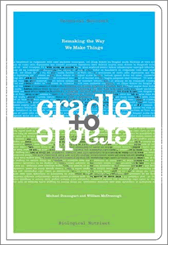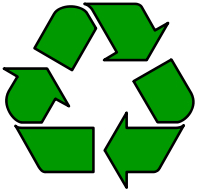At the November 2010 TEDx:GPGP (Great Pacific Garbage Patch), Van Jones spoke on “[t]he economic injustice of plastic”.
Jones is an attorney and activist and was the “Special Advisor [to President Obama] for Green Jobs”. He is also the author of “The Green Collar Economy: How One Solution Can Fix Our Two Biggest Problems” (subject of mixed reviews but endorsed by prominent environmental personalities). Activism begets controversy and Jones is not immune. Regardless of the controversies, he makes good points. While it seems to me that his ideas as presented are short on substance, ideas still have to start somewhere and merely talking about them raises awareness of an issue.
 Jones approaches the problem of plastic pollution from a perspective of social justice. The worst of plastics – most toxic and carcinogenic – are also the cheapest. The poorest have no choice to buy anything else.
Jones approaches the problem of plastic pollution from a perspective of social justice. The worst of plastics – most toxic and carcinogenic – are also the cheapest. The poorest have no choice to buy anything else.
The manufacture of plastics certainly does not take place in the wealthier neighborhoods, rather, in places where the poorest can afford to live. Jones also claims that plastics at the point of disposal affect the poorest because “too often that [plastic] bottle is going to be put on a boat… go all the way across the ocean at some expense…wind up in a developing country, often China…[where] that bottle winds up getting burned” … releasing harmful chemicals.
And Jones calls attention to “Cancer Alley”, that region in Louisiana which reportedly has a higher than average cancer rate among residents, which also happens to be the “petrochemical corridor”.
Now, even if that bottle or any plastics are actually recycled, the next generation is not going to be another container; more likely they will be secondary products such as textiles and plastic lumber for park furniture or wheel stops, none of which are “recyclable” and only temporarily divert from the landfills we are trying to avoid.
Jones says
Well, the root of this problem, in my view, is the idea of disposability itself….In order to trash the planet, you have to trash people…we are at a moment where the coming together of social justice as an idea, and ecology as an idea,we can finally now see that they are really, at the end of the day, one idea.”
And his idea:
We don’t have disposable anything. We don’t have disposable resources. We don’t have disposable species. And we don’t have disposable people either. We don’t have a throwaway planet.
Jones hammers gently that disposability is something we believe in, but we don’t realize the cost in human capital that goes with that (“25% of the people incarcerated in the world are incarcerated in the U.S”).
I think Van Jones has the right idea, even if it is idealistic.
Will McDonough and Michael Braungart wrote “Cradle to Cradle/Remaking the Way We Make Things” in 2002. While the book is really aimed at industry, there’s a core message that ties in with Jones’ thesis. I felt the book was as idealistic as Jones’ talk and likely unrealistic, but one point stood out:
… doing less bad is still no good…
 We have to change just about everything we do. The proud business model (and mantra) of “cradle to grave” no longer serves – and it never did; we are just fooling ourselves. I won’t go into too much detail on the book, but I do want to highlight some points McDonnough/Braungart discuss:
We have to change just about everything we do. The proud business model (and mantra) of “cradle to grave” no longer serves – and it never did; we are just fooling ourselves. I won’t go into too much detail on the book, but I do want to highlight some points McDonnough/Braungart discuss:
– Environmentalists see business/industry as bad while industrialists see environmentalists as obstacles
Can’t argue much with that.
– Ultimate products of most industrial systems are of the one-way linear cradle-to-grave model: extract, shape, sell, dispose
Two keys to this: “extract” almost always means using a non-renewable resource and “dispose” comes with more questions and problems – where? and what are the long term effects?
– Monoculture drastically reduces the benefits of an ecosystem
Looking at industrial agriculture (there are equally damaging consequences of forestry monoculture), the “system” is taken over and as nutrient resources are depleted, the industry relies on synthetic fertilizers. There are all manner of discussions on the benefits and risks of our unnatural production of food, and “organic” is gaining traction, but the bottom line is that the monoculture method produces the most per unit area so is not going away anytime soon because, well, the world population is not decreasing. Monoculture is the growing of a single crop in a large area.
– Products plus: item or service wanted plus additives not asked for (high tech products are usually composed of low-quality materials)
”Product plus” in the business world is sold as an added benefit of service to accompany the product. McDonough uses the term to call attention to the extras that go into production that all too often have harmful effects on the environment. We “got the item or service you wanted, plus additives that [we] didn’t ask for and didn’t know were included and that may be harmful to [us and our] loved ones.”
– (More on products plus): …substances banned for use in the United States and Europe can reach this country via products and parts made elsewhere… The problem intensifies when parts from numerous countries are assembled into one product
Manufacturers rarely know what goes into the parts they use. (A short article by McDonough & Braungart, “What’s Really in the Products We Use Every Day?”, is excerpted from Cradle to Cradle.) Products plus ties in to what Van Jones was saying.
– Must eliminate the concept of waste. Three “E”s triangle – Ecology, Economy, Equity
That bears repeating: we must eliminate the concept of waste.
But that sure seems idealistic and rather naïve. Nice sentiment, but it’s not going to happen. So what do we do? Recycle? In a word, yes, but Jones’ alarm for what really happens is cause for concern. And McDonough/Braungart point out:
– Just because a material is recycled does not automatically make it ecologically benign especially if it was not designed specifically for recycling.
The numbers in the chasing arrow symbol only mean what resin was used to create the plastic, not whether it is in fact recyclable!
That’s a myth associated with recycling plastic. Worse yet, if there’s no market for any of the sorted recycled material, they gets landfilled. If the economy doesn’t support the effort, it’s not getting done. Jones and McDonough/Braungart make that point many times over.
So what do we do? Well, plastic largely comes from petroleum – approximately 7-8% of the extracted crude goes into the production of plastic, split roughly between feedstock and the energy needed for the conversion (I’ve seen these anecdotal numbers in many places, but couldn’t find a solid source; I’m going with convergence here, but I could be wrong.) The American Chemistry Council’s Plastics Division has a nice writeup on the life cycle of a plastic product. Well, the end of life section is pretty small. Still, since plastics come from oil (but maybe that will change soon), they can be converted back into oil – or useful liquid hydrocarbons. Japanese inventor Akinori Ito converts the plastic back to petroleum as described here.
Of course, there is the issue of where the energy comes from to heat the plastics, but as long as the product energy content exceeds the energy input, the process becomes self-sustainable AND diverts those toxins from the landfills. I found Ito’s patents and patent application here. Sometimes the simple answers are right in front of us all along.
And yet, even as a second generation of the non-renewable source (plastic back to oil) serves our need for fuel, it is just a stopgap measure. We’re still running out of oil, but with this process some of the problems associated with plastics disposal could potentially be eliminated.
This is a good point to note that “Cradle to Cradle” is printed on a recycled and recyclable plastic “paper” with a reusable, non-toxic ink. It’s heavier than a normal book of its size, but it still feels like paper. And yes, you read that right – the ink can be (according to the authors) easily washed from the pages with very hot water and reused (I imagine when condensed).
Jones hints at one emergent science/technology as potential for solving the plastics problem – biomimicry. One of the best explanations of – and demonstrations of – sustainability I’ve seen recently, happens to draw from biomimicry. Architect Michael Pawlyn, speaking at TEDSalon London 2010, describes three necessary changes to achieve sustainable living: radical increases in resource efficiency, linear to closed loop, and shifting fossil fuel economy to solar. Pawlyn was deeply involved in the Eden Project, an amazing project in England. The short TED talk covers a lot quickly. Pawlyn’s second point describes what I’ve already discussed above, that
The way we tend to use resources is we extract them, turn them into short-life products and then dispose of them.
Nature works very differently.
Humans use resources linearly. Nature uses them and reuses them.
“[T]he waste from one organism becomes the nutrients” of another….
Eliminating the concept of waste….
Because, and the BLUF was in the title, there is no “away” when we throw things “away”.


